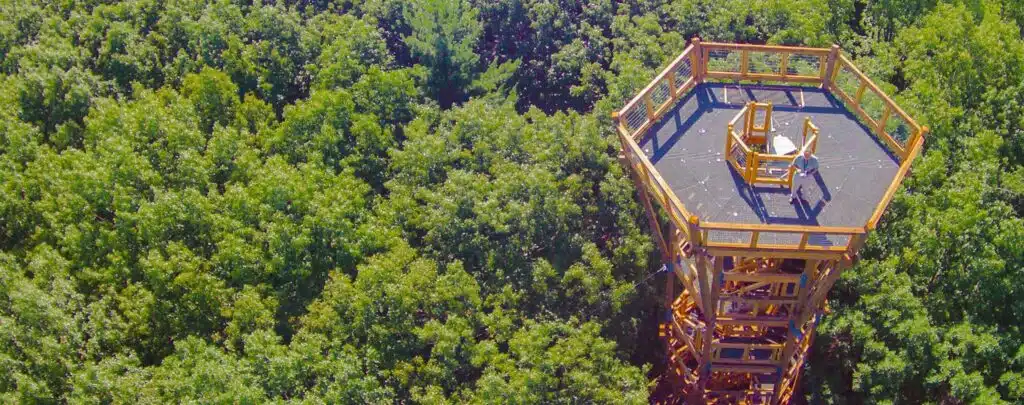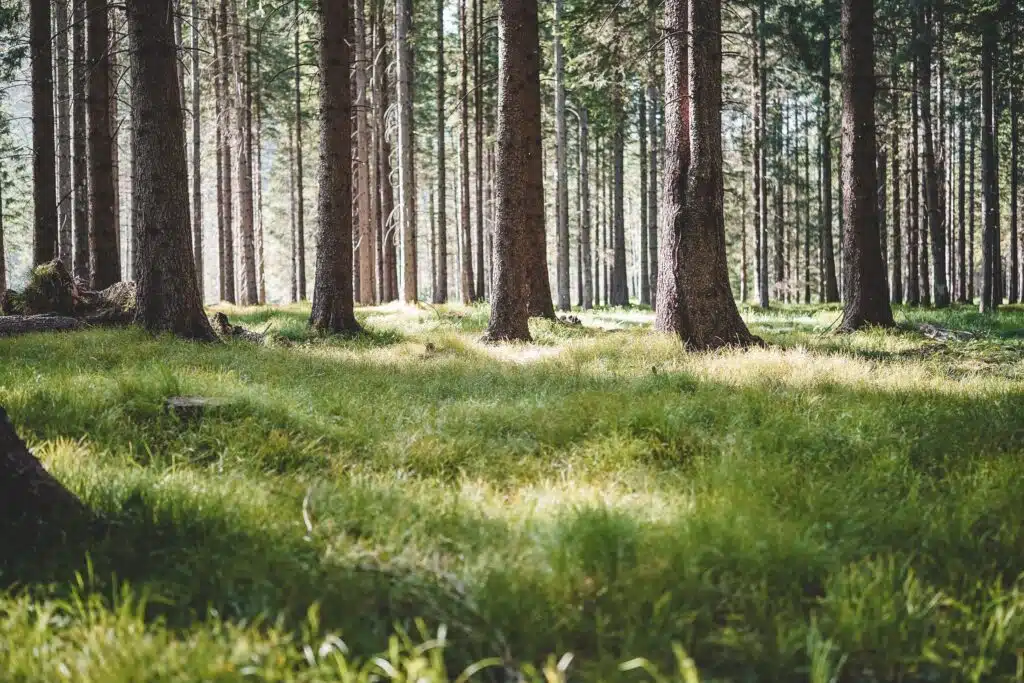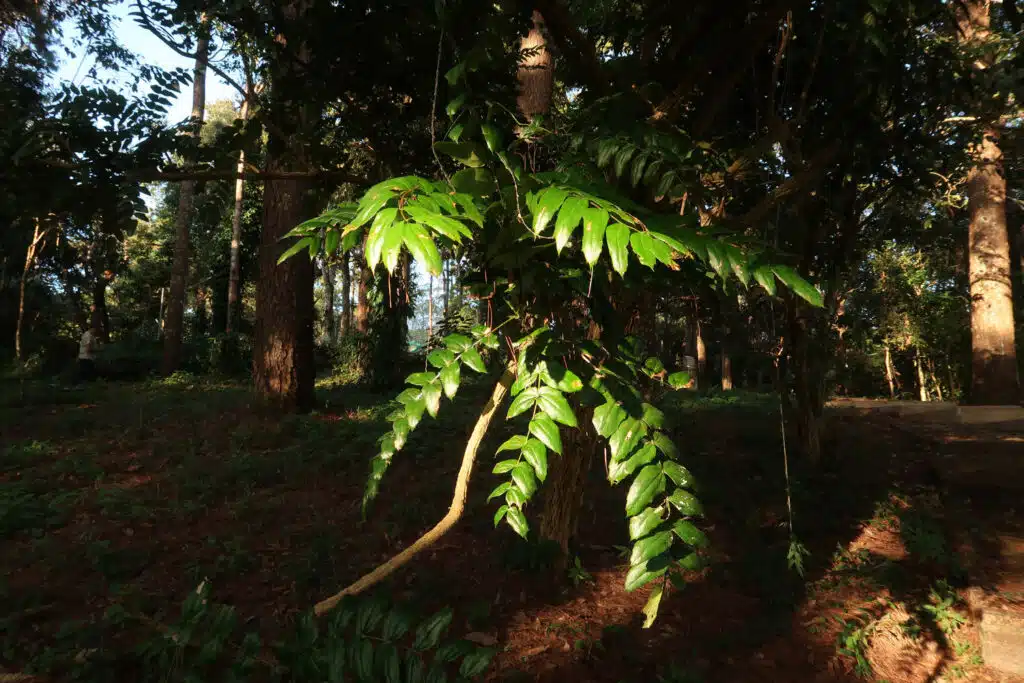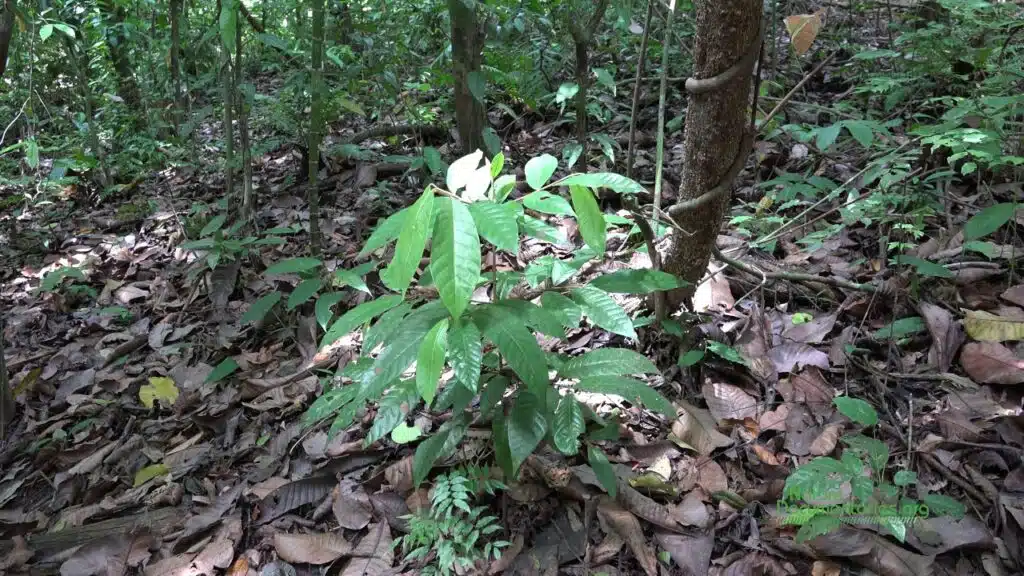
The Emergent Tower at Holden Arboretum stands 120 feet in the air, allowing you to overlook the canopies of the tallest trees in the forest and feel the warmth of the bright sunshine. Before you climbed the 202 steps to the top of the tower, you remember being shielded from the sun by the trees above you. Little light reached the forest floor, yet you still observed smaller plants that could thrive in these shaded areas which comprise the forest understory. Unlike the plants from the understory, the trees that you see at the top of the tower experience full sunlight on clear days. You ponder how plants are capable of growing in such a vast range of light intensities despite the fact that all plants need light to survive.



This was the experience I had the first time I climbed to the top of the Emergent Tower. Little did I know that this one event would foster my curiosity and compel me to study the relationships between plants and their light environment. As a plant physiologist in the Medeiros Lab at Holden, I am interested in researching the strategies that plants use to capture, absorb, and use light for photosynthesis and how these strategies differ according to the amount of light that is present.
Photosynthesis is the process where plants use light to fuel reactions that ultimately form sugars needed for growth and function. Photosynthesis begins when pigments inside of leaves absorb sunlight. Plants growing in shaded areas want to absorb as much light as possible since light is a scarce resource. The amount of light captured for photosynthesis largely depends on the arrangement of leaves and branches across the plant. Shaded plants can increase light absorption by having leaves that are widely spaced out along the branch, rather than having leaves that are tightly clumped together. This lowers the amount of leaf overlap, also known as self-shading, which helps light fall evenly across the plant so all leaves have enough light for photosynthesis. Another way understory plants increase light capture is to alter the angle of their leaves. Plants can maximize the amount of surface area that is available to catch light by moving their leaves towards sun rays. These small adjustments in leaf placement can have large impacts on how well shaded plants are able to photosynthesize.
Have you ever been walking in the shaded forests at Holden Arboretum, and then all of a sudden you feel a beam of light shining in your eyes that comes seemingly out of nowhere? This is how many understory plants experience light. The majority of light that understory plants receive is from short bursts of light that reach the forest floor through small gaps in the canopy. Since these flecks of sunlight are a short-term light source, plants have to rapidly increase photosynthesis in order to take full advantage of the light. This is especially important since there can be long periods of time between flecks of sunlight that reach the forest floor. Good use of these light bursts allows plants to be successful in shaded areas.


Understory plants are not the only ones that need special strategies to thrive in their light environment. Similar to how shade poses challenges to photosynthesis, high light intensities can create obstacles that plants need to overcome. Although light is needed for photosynthesis, too much sunlight can be harmful. This relates to the idea that humans need sunlight to get their dose of vitamin D, but too much exposure can damage skin. Fortunately, plants that are exposed to high sunlight have ways to help minimize damage, just as you might apply sunscreen to protect yourself when you are outside. Leaf pigments play a large role in providing protection when light is dangerously high. Chlorophyll is the primary pigment for light absorption during photosynthesis and is responsible for the green color of leaves. Plants can alter the amount of chlorophyll in leaves which gives them some degree of control over how much light is absorbed. Plants with leaves at the top of the forest canopy have less chlorophyll as a way to protect them from damage. In addition to limiting the amount of light that enters the leaf, plants can also prevent damage by safely handling light that is absorbed. Anthocyanin is a pigment that can offer protection by absorbing excess light that may otherwise be damaging to plant cells. Plants in different light environments have their own unique set of strategies that allow them to prosper in spite of the challenges they may face.
The next time that you visit Holden Arboretum, think about how strategies for photosynthesis might change as you move from a low to high light environment and appreciate how these different strategies contribute to the diversity of plant life you see around you.

Miranda Shetzer
PhD Candidate
I am a second-year PhD candidate interested in how the abiotic environment influences the physiology and distribution of Rhododendron minus, a species native to the Southeast United States. I am currently working on a species distribution model to elucidate how factors like climate, topography, soil pH, and vegetation impact where this species grows. In addition to modeling approaches, I am conducting manipulative greenhouse experiments to see whether there is trait divergence across different R. minus populations. R. minus can be found along a broad light gradient, with plants in the understory receiving far less light than plants in light gaps. Hence, one of the greenhouse experiments examines how light intensity influences growth and pigments of R. minus to infer differences in light responses across the range.













